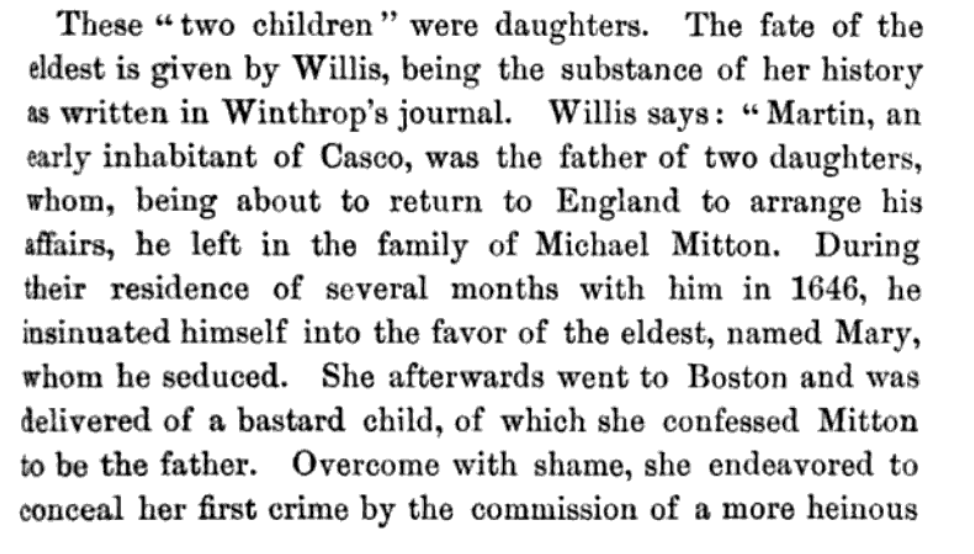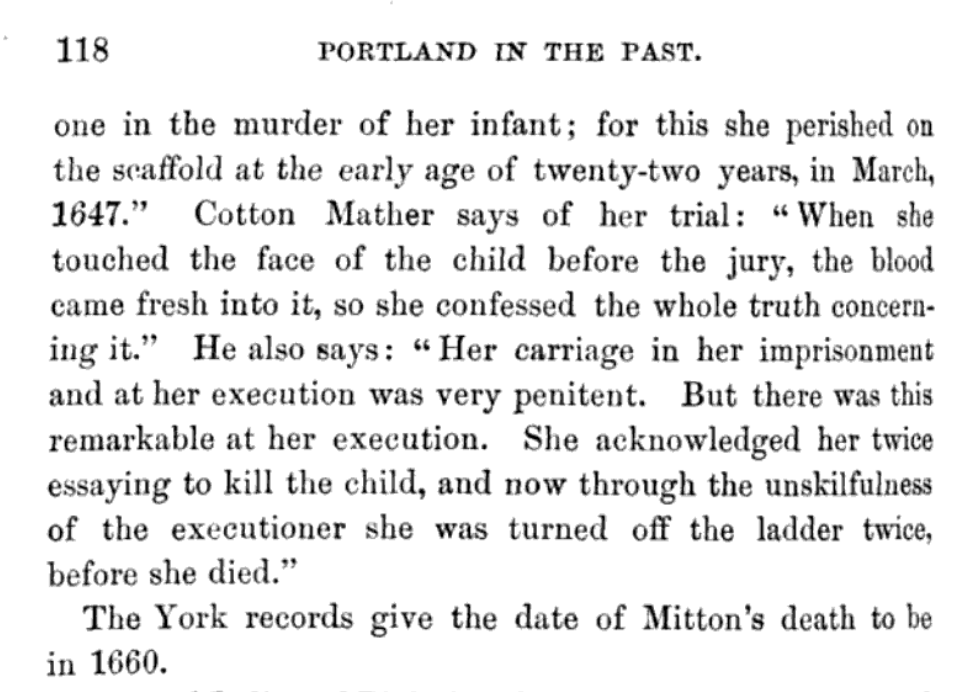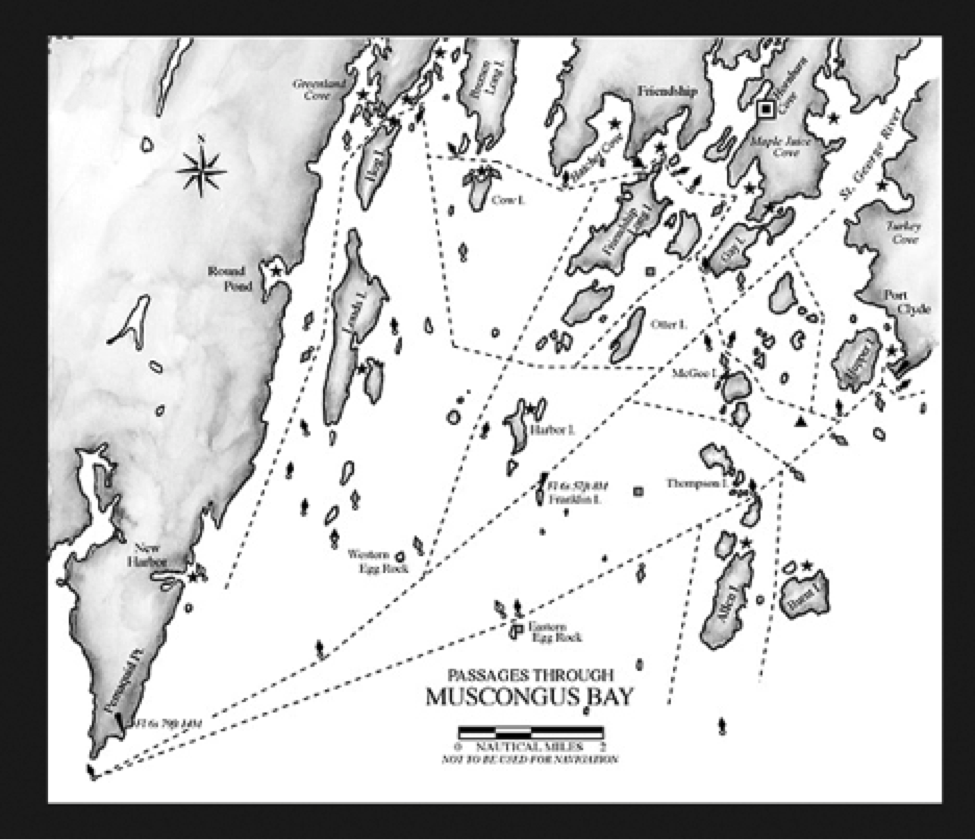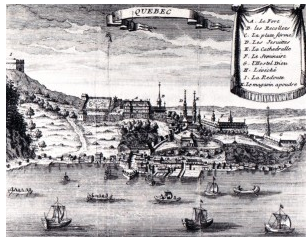A Sordid Tale – George Mitton
I have been fortunate in the exploration of my family history to uncover individuals who bravely faced the British on the Lexington Common and documented others who served in World War I and II, the Korean War and Spanish-American War. I have shared stories about individuals who worked as midwives, farmers, tavern owners, tailors, preachers, teachers, and many who were elected to serve their communities or faith.
My family tree consists of well over 1,000 individuals and a couple branches extend over 10 generations. Until now, I never crossed paths with an individual whose actions were so abhorrent that I wish I could just shake from my family tree. The person that I am referring to is George Mitton, my 10th great grandfather, who was born 25 August 1617 in Shrewsbury, England and died in 1660 in Falmouth, Maine.
George Mitton was married to Elizabeth Cleeve (1619-1691). Elizabeth’s father, George Cleeve, came to New England in 1630 and in 1632 established a settlement called Casco, later to be named Portland, Maine. George was also commissioned as Deputy President of the Province of Lygonia. A statue of George Cleeve stands on the Eastern Water front on private land in Portland. The statue was not accepted by the city council who claimed, without evidence, that Cleeve may have owned a slave.

The following is the sordid tale of George Mitton and his betrayal of his neighbor Richard Martin, which led to the death of a child and the hanging of Mary Martin. Richard Martin, a destitute merchant, returned to England and placed his daughter Mary in service as a servant to his neighbors, George and Elizabeth Mitton. Mary was 22 at the time and George (29) proceeded to “seduce” her, resulting in her becoming pregnant and later taking the life of her own child. There is no record of George Mitton suffering any consequences for his adultery, the death of his child or actions that led to the death of Mary Martin.


Comments, corrections and and suggestions appreciated.
Copyright © 2020. All Rights Reserved by David R. French.

